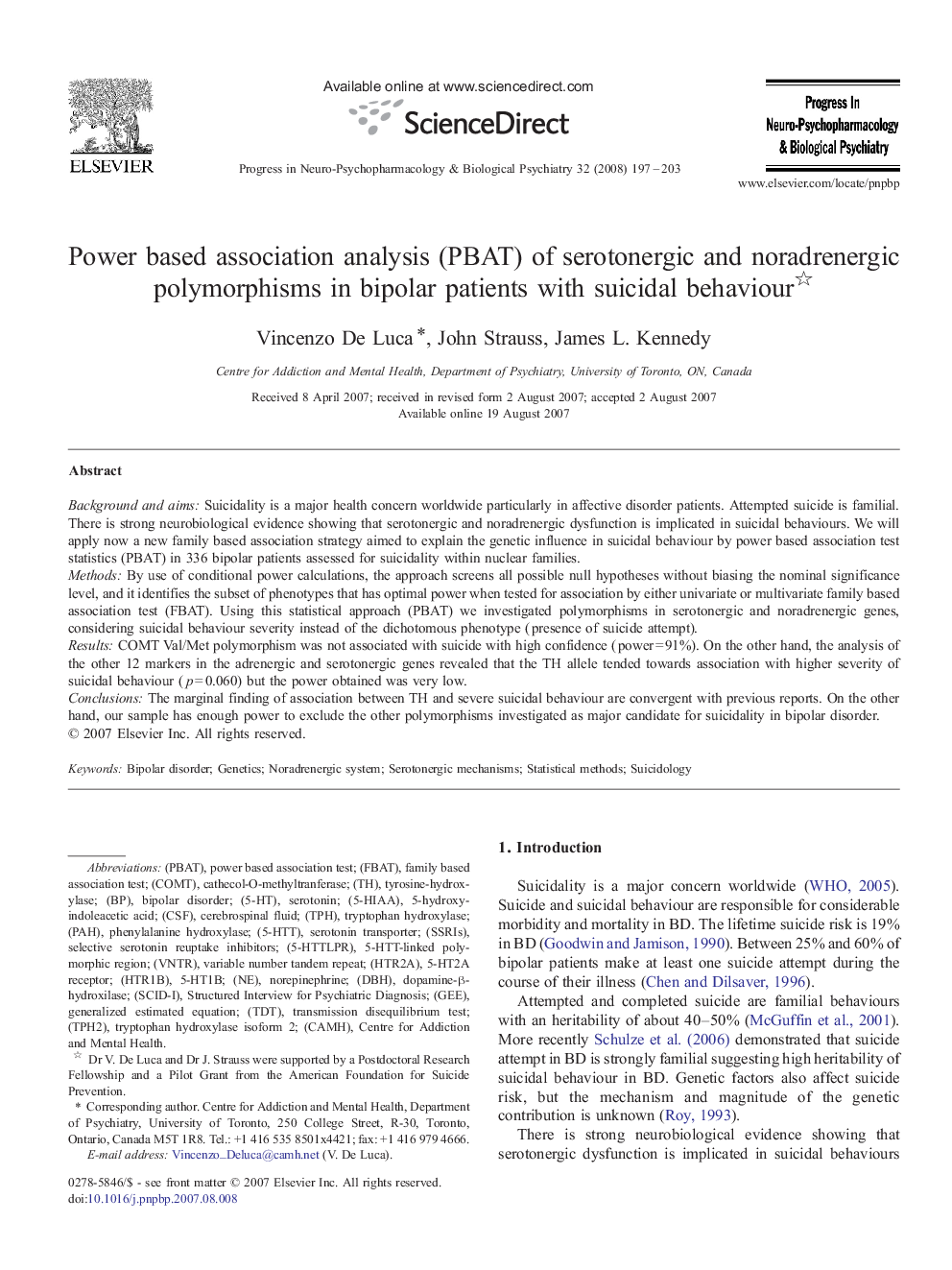| Article ID | Journal | Published Year | Pages | File Type |
|---|---|---|---|---|
| 2565719 | Progress in Neuro-Psychopharmacology and Biological Psychiatry | 2008 | 7 Pages |
Background and aimsSuicidality is a major health concern worldwide particularly in affective disorder patients. Attempted suicide is familial. There is strong neurobiological evidence showing that serotonergic and noradrenergic dysfunction is implicated in suicidal behaviours. We will apply now a new family based association strategy aimed to explain the genetic influence in suicidal behaviour by power based association test statistics (PBAT) in 336 bipolar patients assessed for suicidality within nuclear families.MethodsBy use of conditional power calculations, the approach screens all possible null hypotheses without biasing the nominal significance level, and it identifies the subset of phenotypes that has optimal power when tested for association by either univariate or multivariate family based association test (FBAT). Using this statistical approach (PBAT) we investigated polymorphisms in serotonergic and noradrenergic genes, considering suicidal behaviour severity instead of the dichotomous phenotype (presence of suicide attempt).ResultsCOMT Val/Met polymorphism was not associated with suicide with high confidence (power = 91%). On the other hand, the analysis of the other 12 markers in the adrenergic and serotonergic genes revealed that the TH allele tended towards association with higher severity of suicidal behaviour (p = 0.060) but the power obtained was very low.ConclusionsThe marginal finding of association between TH and severe suicidal behaviour are convergent with previous reports. On the other hand, our sample has enough power to exclude the other polymorphisms investigated as major candidate for suicidality in bipolar disorder.
